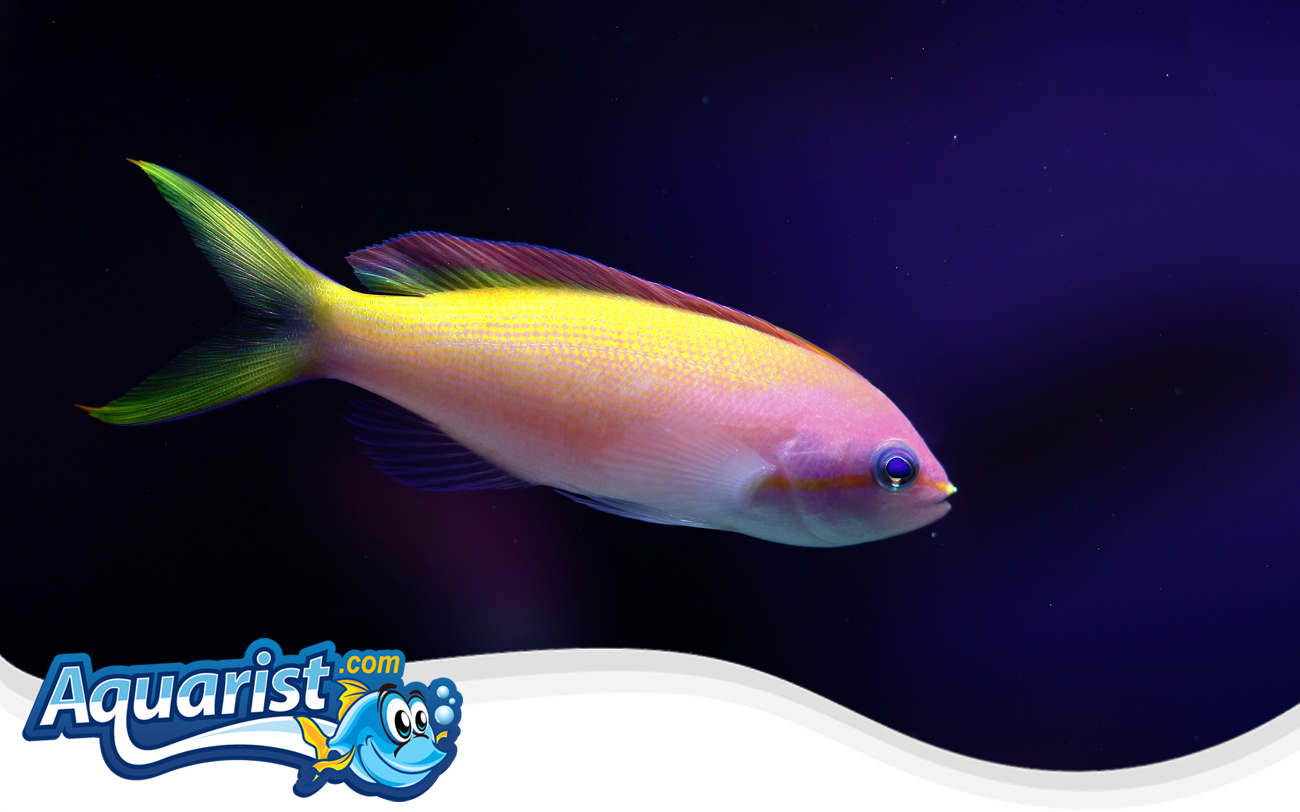Overview
- Native to the Indian Ocean, particularly around coral reefs with strong currents.
- Recognized for its vibrant coloration, transitioning from a golden-yellow head to a deep pinkish-purple body.
- A schooling species that thrives in groups, forming stunning displays of synchronized swimming.
- Highly active and prefers open water areas near reef structures where it can move freely.
Feeding
- Planktivorous, primarily feeding on zooplankton and suspended organic matter in the water column.
- In captivity, requires a varied diet of finely chopped seafood, enriched brine shrimp, and high-quality marine flakes.
- Frequent small feedings throughout the day support its high-energy lifestyle.
- Providing live or frozen foods helps maintain its vibrant colors and natural foraging behavior.
Habitat
- Inhabits mid-water regions of reef environments, often hovering near ledges and drop-offs.
- Prefers areas with moderate to strong water flow, which replicates its natural feeding conditions.
- Requires an environment with open swimming space and access to hiding spots.
- Thrives when housed in well-established aquariums with stable water parameters.
Fish Care
- Optimal water temperature: 76-82°F (24-28°C).
- pH level: 8.1-8.4, with a specific gravity of 1.023-1.026.
- Regular feeding and consistent water changes help maintain a stress-free environment.
- Requires high-quality filtration to ensure water clarity and oxygenation.
Compatibility
- Peaceful and best kept in groups, as it thrives in a social environment.
- Compatible with other non-aggressive reef fish that share similar water column habits.
- Should not be housed with overly aggressive or territorial species.
- Prefers the company of its own kind, forming small schools that create natural reef dynamics.
Aquarium Behavior
- Constantly swimming, often seen moving gracefully through open water.
- Forms strong social structures within its group, displaying synchronized movements.
- Becomes more confident and interactive when kept in a stable, well-structured environment.
- Frequently hovers in mid-water, occasionally darting around when feeding or interacting with tank mates.


